Telugu is recognized by the Indian Constitution as one of the 23 Scheduled languages. When India became a self-governing nation, each state and territory chose its own official language(s). Telugu is just one of those official state languages, and while it's not nearly as popular as Hindi or English in India, it's still a language spoken by millions of people in India and all over the world.
So, what are the basics and the background facts about Telugu that can help you understand more about the language? Find out more when you read on!
Article Overview
- How Telugu became an official language in India
- Origins of Telugu language
- Basics of Telugu language
- Telugu language abroad

Brief History of the Language Regions of India
India's linguistic diversity surprises many Westerners, but there are more native speakers of Tamil on our planet than of Italian. Likewise, more people speak Punjabi than German, Marathi than French, and Bengali than Russian. There are more Telugu speakers than Czech, Dutch, Danish, Finnish, Greek, Slovak, and Swedish speakers combined.
Bob Harris, English music presenter former host of the BBC2 music program The Old Grey Whistle Test, and co-founder of the magazine Time Out.
The Indian Constitution was written and ratified in 1950, almost three years after the British Crown relinquished all its possessions in the Indian sub-continent and left the natives to self-govern. On January the 26th 1950, English and Hindi became the official languages of the Indian government.
However, each state and territory of the Union was given the liberty to choose its own official language or languages, amongst the ones recognized by the Eight Schedule of the Constitution. This made sense, as there are more than 122 languages spoken by at least 10,000 people in India and 30 languages spoken by at least 1 million people.
Additionally, there are many more languages with fewer than 10,000 speakers in India
States could decide, according to their demographics, what language would serve the interests of their population the best. Many Indian states and territories recognized more than one language as official simply because of the diversity of their population. For example, in Mumbai, Marathi is the main language, in the North of India Urdu is more commonly spoken, and in the East of the country, Tamil is widespread.
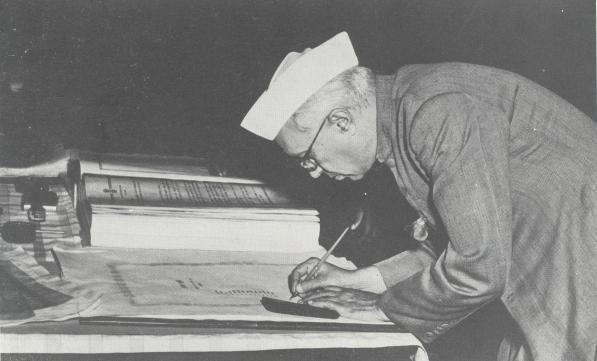
As recently as 2014, the Indian Constitution changed and created the 29th state of the Union of India. The partition of this state, called Telangana, from Andhra Pradesh, was partly due to the division of the population in the state over their native language.
Telugu became the official language of Telangana.
The Origins and History of Telugu
Unlike Hindi, Telugu belongs to the Dravidian language family, for which linguists have struggled to identify a birthplace. Some think that the Dravidian languages may have been born in India while others believe that it was brought by migrations three to four thousand years ago.
Wherever it came from, the Dravidian languages, including Telugu, are mainly spoken in South and Southeast India. The first apparitions of Telugu words were found to be written along the more common vernacular Sanskrit language. Nagabu was the earliest occurrence of a Telugu word to have been found, and archaeologists have estimated that the inscription it was written on dates from the 1st century BCE.
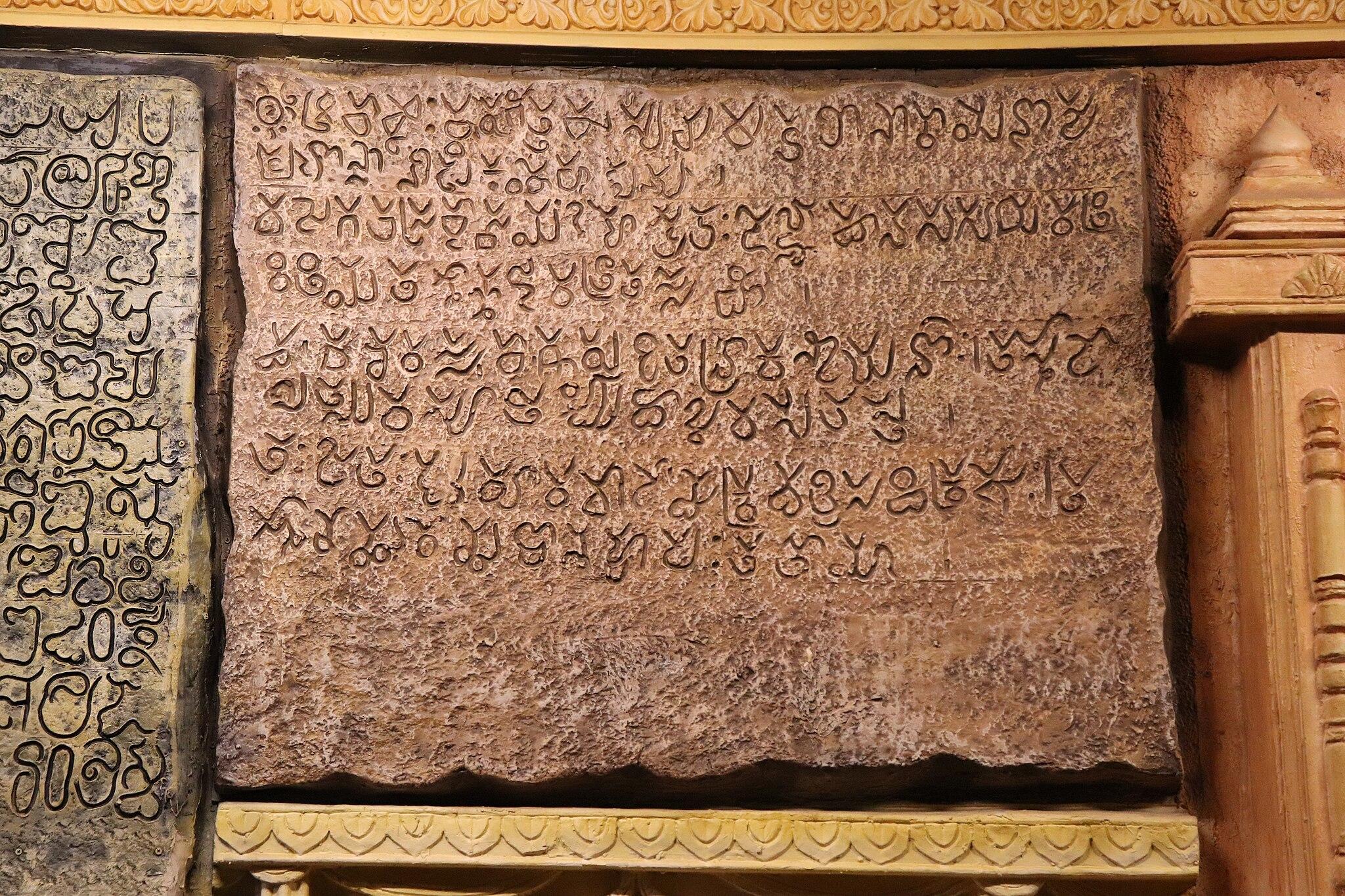
Telugu was for a long time used as a side language of Sanskrit, but reverse coin legends were often written in Telugu or Tamil, while the main face of the coin was minted in Prakrit (a group of medieval dialects formerly used throughout India).
The first apparitions of Telugu being used as a written language on its own were found in the Rayalaseema region of Andhra Pradesh. It is believed that the local ruling dynasty, the Renati Cholas, decided to use Telugu for official purposes instead of the usual Sanskrit.
The rise and rule of the Karnata Empire in the south of India from the 14th to the 17th centuries allowed Telugu to flourish. Telugu was the preferred language of the court even though Kanada was also used throughout the Empire. Under the influence and patronage of King Krishnadevaraya, Telugu became a prominent and popular literary language.
King Krishnadevaraya is said to have been told by Lord Vishnu to promote the language. Krishnadevaraya wrote in his work, Amuktamalyada, that Vishnu told him:
Telugu
తెలుఁగ దేల యెన్న దేశంబు దెలుఁగేను
తెలుఁగు వల్లభుండఁ తెలుఁగొకండ
యెల్ల నృపులు గొలువ నెరుఁగవే బాసాడి
దేశభాషలందుఁ తెలుఁగు లెస్స
English Translation
If you ask, 'Why Telugu?' It is because this is Telugu country and I am a Telugu king. Telugu is one of a kind. After speaking with all the kings that serve you, didn’t you realize - amongst all the regional languages, Telugu is the best!
Alas, the Karnata Empire succumbed to the repeated invasion of the Deccan Sultanates in the North, and the decline was complete when most of the former Imperial regions declared their independence and formed princely states. The Telugu language survived nonetheless.
During the zenith of the Delhi Sultanate (1206–1526), Telugu started to be influenced by Persian and Arabic languages due to their prominent place in the Muslim Empire. Later on, that influence grew stronger under the Mughal Empire. During the colonization era, Nicolo di Conti, an Italian merchant and explorer, came to note the similarities between his native language and Telugu as both end most of their words with vowels.
He was the first one to coin Telugu as the "Italian of the East", though history and Telugu speakers, would probably find that Italian being the "Telugu of the West" is more accurate.
Throughout the 19th and 20th century, under the British rule, Telugu was also influenced by the English language. During the 1930s, Telugu still presented a diglossia, by which a literary and elitist form of the language differed significantly from its more colloquial version.
However, unlike Bengali, the more elitist version of the language became the only one to be taught in schools and eventually the single version of written and spoken Telugu. As Telugu is one of the oldest languages in India, with historical proof of Telugu being used going as far as 400 BCE, the language has been listed by the Indian government, besides ten other Indian languages, as a Classical Language of India.
The Indian Government, in 2004, began classifying certain languages as classical if they met certain criteria, such as having high antiquity, and valuable, original, and distinct literary heritage, and is at least 1,000 years old.
As of 2024, the Classical Languages in India are: Assamese, Bengali, Kannada, Malayalam, Marathi, Odia, Pali, Prakrit, Sanskrit, Tamil, and Telugu.

The Telugu Dialects in India
Since Telugu has been spoken for thousands of years, it naturally has undergone some changes. When a language is spoken in different regions, it's expected that different dialects will develop over time. This can be seen in most languages in the world today; just look at the different dialects of English in the US!
Telugu is the fourth most spoken native language after Hindi and Bengali. Telugu is the official language of the Indian states of Andhra Pradesh, Telangana, and the union territory of Puducherry but due to historical migrations, Telugu is also spoken in some other regions: Tamil Nadu, Karnataka, Maharashtra, Odisha, Chhattisgarh, parts of Jharkhand and the Kharagpur region of West Bengal.
It is also commonly used in the Andaman and Nicobar Islands territory.
Linguists classify Telugu into 3 main dialects:
- Andhra Telugu is mainly spoken in the coastal region of the Andhra Pradesh state.
- Rayalaseema Telugu is spoken in the four districts which compose the eponymous region of the Andhra Pradesh state.
- Telangana Telugu is spoken in the state of Telangana.
The state of Telangana was created in 2014 after more than four decades of political unrest and parliamentary negotiation. It was then officially separated from the state of Andhra Pradesh but Hyderabad will remain the joint capital until 2025. One of the main differences between the two states is their language, and the Telangana Telugu was much more influenced by Urdu than the Andhra Telugu.
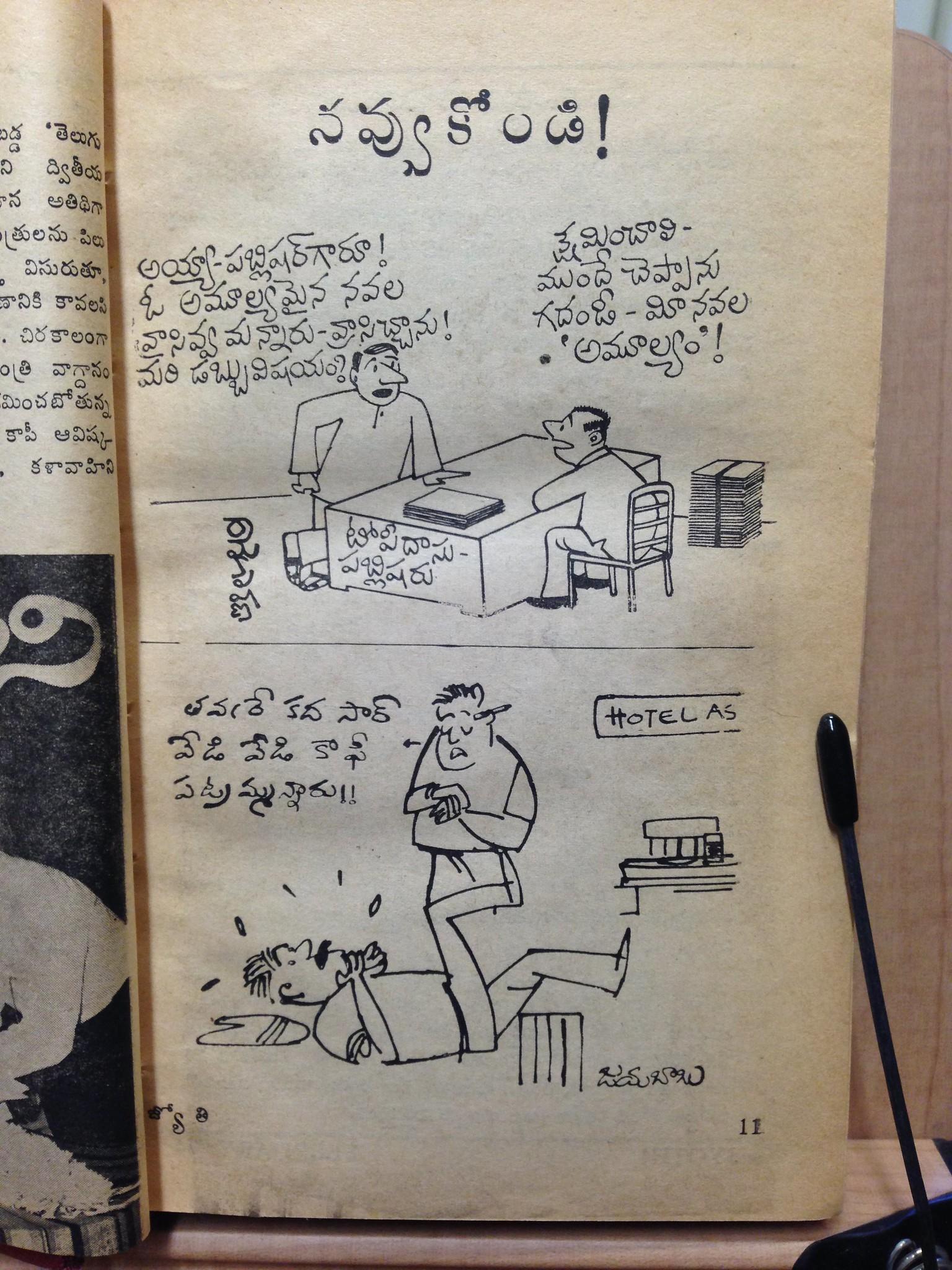
Besides these three main Telugu dialects, many more are spoken throughout India including Berad, Dasari, Dommara, Golari, Kamathi, Komtao, Konda-Reddi, Salewari, Vadaga, Srikakula, Vishakhapatnam, East Godavari, Rayalseema, Nellore, Guntur, Vadari and Yanadi.
Some Adivasi, or Indigenous tribes of the Indian sub-continent, also speak dialects closely related to Telugu: the Chenchu people, a hunter-gatherer tribe scattered through the states of Andhra Pradesh, Telangana, Karnataka, and Odisha, speak Chenchukulam.
In Karnakatta, the 4 million Telugu native speakers are speaking a version of the language which has been more influenced by the Kanada language and is slightly different from the Andhra version. In the state of Tamil Nadu where 3.5 million Telugu speakers live, linguists have identified no less than five different Telugu dialects: Hosur, Salem, Coimbatore, Vellore, Tiruvannamalai and Madras Telugu.
The Telugu Alphabet
The Telugu script evolved from the Brahmic writing system approximately 1500 years ago. This script is formed by an alphasyllabary made of 18 vowels (short and long) and 35 consonant signs. Each vowel has two forms; the first one is used when the vowel is at the beginning of the word if a word is only composed of vowels.
The second form is used when the vowel is added to a consonant to form a consonant/vowel syllable. On top of the 53 vowel and consonant signs, Telugu also uses four more characters which will change the way a syllable is pronounced or where the tonic accent on a word will be placed.
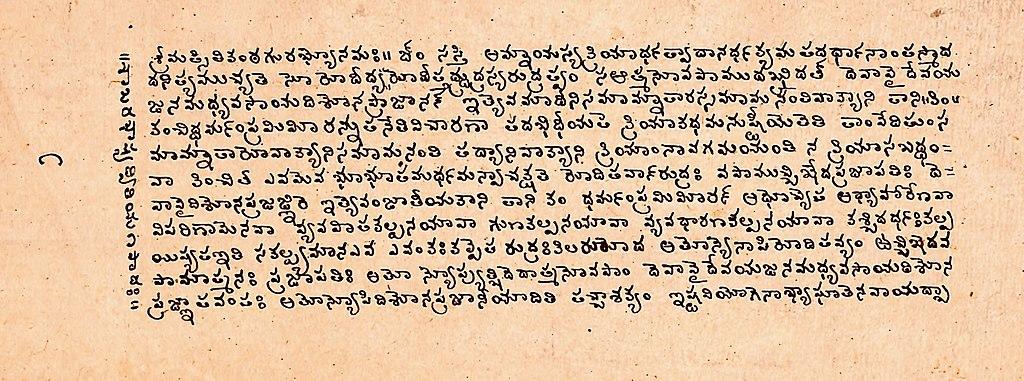
Interestingly, although Telugu evolved from the Brahmi script just like many other scripts in India, including Tamil, Gujarati, Bengali, and Devanagari, among others, the Telugu script looks very different from its linguistic cousins. Its notable rounded, curving shapes were developed as a better way to write on the medium of choice: palm leaves. Straight lines, made with a stylus, on palm leaves tended to tear holes in them. Making curved lines helped prevent this from happening.
Numbers in Telugu
0 is ౦ = sunna (సున్నా)
1 is ౧ = okati (ఒకటి)
2 is ౨ = rendu (రెండు)
3 is ౩ = mūḍu (మూడు)
4 is ౪ = nālugu (నాలుగు)
5 is ౫ = aidu (ఐదు)
6 is ౬ = āru (ఆరు)
7 is ౭ = ēḍu (ఏడు)
8 is ౮ = enimidi (ఎనిమిది)
9 is ౯ = tommidi (తొమ్మిది)
The Telugu Language OutsideIndia
Small communities speaking Telugu-related languages live in Pakistan, Afghanistan, Nepal, Bangladesh, Bhutan, Malaysia, Indonesia, and Singapore.
Telugu is also the language of the Sri Lankan Gypsy people known as the Ahikuntakas. Telugu speakers are found as well in Australia, New Zealand, Bahrain, Canada (Toronto), Fiji, Malaysia, Singapore, Mauritius, Myanmar, Italy, Netherlands, Belgium, France, Germany, Ireland, the United Kingdom, South Africa, Trinidad and Tobago, and the United Arab Emirates. But, the most significant Telugu community living outside of India can be found in the United States which counts more than 1.23 million Telugu speakers.
In New Jersey and the capital of Jersey City, the high concentration of Telugu speakers birthed a little India neighborhood that some refer to as Little Andhra. In the UK, the last census only counted about 50,000 Telugu native speakers.
Learning Telugu is a great linguistic move for being able to communicate with more people from all over the world!
Ready to start learning? You can easily find a Telugu tutor on Superprof who can help you begin learning today!

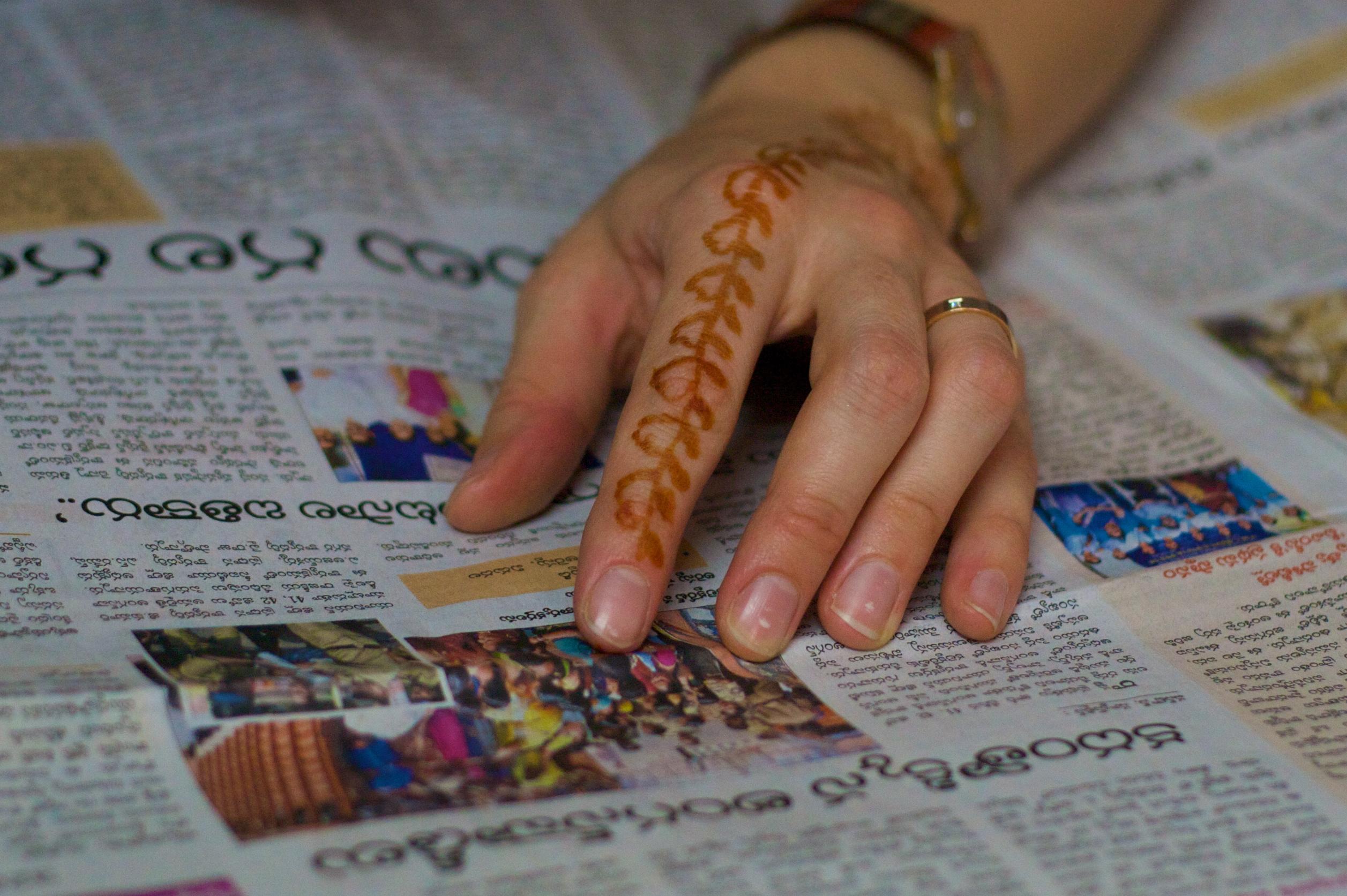














I teach Telugu and Sanskrit languages. Can I create ads for them?
Hello, yes you are able to teach Sanskrit on the site and you can specify in the title of your ad for Telugu. Email us at hey@superprof.com for any more questions.